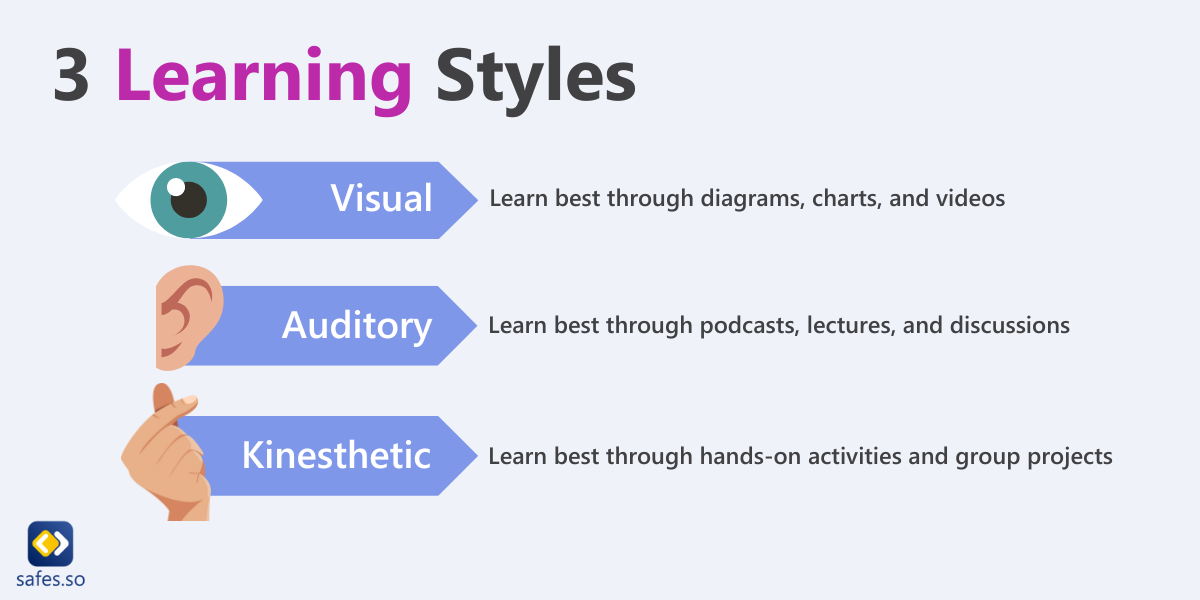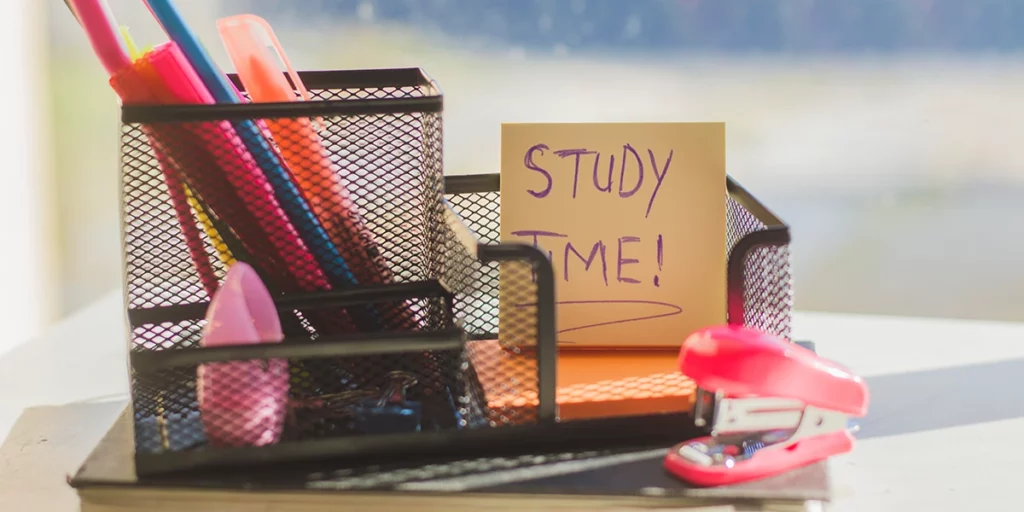Homework is an essential part of a student’s academic journey. It helps students develop a sense of responsibility, time management, and critical thinking skills. But motivating students to do homework can be a challenging task for parents and teachers alike. Lack of motivation can lead to poor academic performance, which can affect a student’s overall growth and development. In this blog post, we will discuss some effective strategies that parents and teachers can use to motivate their kids to do homework and ensure their success in the classroom. Whether you’re a parent or a teacher, these tips will help you inspire your students to excel academically and develop a lifelong love for learning.
Download and Start Your Free Trial of the Safes Parental Control App
Understand Your Students’ Learning Styles
Learning styles refer to the different ways students learn and process information. The most common learning styles are visual, auditory, and kinesthetic. To determine your students’ learning styles, you can use various methods such as observation, surveys, and assessments. Once you have identified their learning styles, you can adjust homework assignments accordingly.
For visual learners, you can use diagrams, charts, and videos to explain concepts. For auditory learners, using podcasts, lectures, and discussions are good options. For kinesthetic learners, incorporate hands-on activities and group projects. Additionally, you can use positive reinforcement and rewards to motivate students to do homework. Praise their efforts and progress and provide a supportive and engaging learning environment. By catering to their learning styles and providing motivation, you can help your students get motivated to do homework and enhance their academic performance.

Create a Positive Study Environment
Creating a positive study environment is crucial for motivating students to do homework. A study-friendly space should be quiet, well-lit, and free from distractions such as TVs, phones, and social media. It should also be comfortable and have all the necessary materials such as books, pens, and paper. To create a study-friendly space, encourage your students to personalize their study area with things that motivate them, such as motivational quotes or pictures.
Additionally, setting boundaries is essential to creating a positive study environment. Encourage your students to set a specific time for homework and stick to it. This helps them develop a routine and a sense of responsibility. It also ensures that they have adequate time to complete their assignments and reduces the risk of procrastination.
Establish a Routine
Establishing a homework routine is crucial for developing motivation and consistency. A routine helps students develop a sense of responsibility and time management. To set a homework routine, start by setting a specific time and place for homework. Encourage your students to prioritize their homework and avoid distractions such as phones and social media during study time. Additionally, break down assignments into smaller, manageable tasks and set achievable goals. Celebrate their progress and accomplishments and encourage them to stay consistent.
Consistent practice is essential for developing good study habits and achieving academic success. By following a homework routine and practicing consistently, students can develop the motivation to do homework, stay organized, and excel in their academic pursuits.
Use Parental Control Apps
The Safes parental control app can be an effective tool to help parents motivate their children to study. The app offers a screen time monitoring feature, which allows parents to regulate the amount of time their children spend on their devices. This can help reduce distractions and encourage children to focus on their homework.
Additionally, Safes offers instant block and bedtime mode features, which can help regulate children’s daily routines and ensure that they get enough sleep. By using these features, parents can help their children develop a routine, which is essential for motivation to do homework.
The app also shuts down unneeded apps, further reducing distractions, and ensuring that children can focus on their studies. Overall, the Safes parental control app provides a range of features that can help motivate children to do homework, reduce distractions, and promote academic success.
Safes is available for both Android and iOS devices. By downloading it today, you can benefit from a 14-day free trial with premium features. To learn how to use Safes, follow the links below:
- Windows parental controls
- Macbook parental controls
- Parental controls on Android
- iPhone parental controls
Make Homework Fun
Making homework enjoyable is an effective way to motivate students to do homework. To make homework more enjoyable, incorporate fun activities and games into assignments. For instance, you can turn math problems into a game by using flashcards or apps. In this blog post, you can find a list of the best educational apps, like the ones that teach math through games: 16 Educational Apps and Sites for Elementary Schoolers in 2023.
You can also encourage your students to use creative writing prompts to make essay writing more enjoyable. Celebrate their progress in writing and provide a supportive and engaging learning environment.
Making learning enjoyable not only motivates students to do homework but also enhances their learning experience. When students enjoy learning, they are more likely to be engaged, retain information better, and develop a lifelong love for learning. By incorporating fun into homework, you can help your students stay motivated, improve their academic performance, and enjoy the learning process.
Use Positive Reinforcement
Positive reinforcement is a technique used to encourage and motivate desired behavior by rewarding it. It involves providing a positive consequence immediately after the desired behavior is exhibited. Examples of positive reinforcement include verbal praise, rewards, privileges, and recognition. For instance, a teacher can provide praise and recognition for a student who completes their homework on time or participates in class discussions. Similarly, a parent can offer a reward or privilege, such as extra screen time, for a child who completes their schoolwork.
Consistency is crucial for positive reinforcement to be effective. It is essential to consistently reward and acknowledge desired behaviors to encourage and motivate students. When there is no motivation to do schoolwork, positive reinforcement can be used to encourage and motivate students to complete their work. By consistently rewarding and acknowledging desired behaviors, students are more likely to develop a positive attitude towards schoolwork and develop good study habits.
Additional Ways to Motivate Children for Homework
These additional ways to motivate children for homework are effective in encouraging students to develop good study habits and achieve academic success:
- Offer Choices: Offering choices gives children a sense of control and ownership over their homework, which can increase their motivation to complete it.
- Give Breaks: Encouraging breaks allows students to recharge and refocus, reducing the risk of burnout and frustration.
- Be Positive: Using positive language and showing interest in their work can also increase their motivation and engagement.
- Create Goals and Use Technology: Creating goals and using technology can make homework more engaging and interactive.
- Connect with Teachers: Connecting with teachers can also provide valuable support and guidance.
- Be a Role Model: Finally, being a role model by modeling good study habits can inspire and motivate children to develop a love for learning.
By incorporating these strategies and tips, parents and teachers can help motivate children with no motivation to do schoolwork and encourage them to achieve academic success.

How Teachers Can Motivate Students to Do Homework
Teachers can adopt several strategies to motivate students to do homework and stop procrastinating, such as:
- Explain the Purpose: Explain the purpose of homework and how it relates to classroom learning.
- Provide Instruction: Provide clear and concise instructions for homework assignments to avoid confusion and misunderstandings.
- Provide Support and Guidance: Provide support and guidance for students who struggle with homework by offering extra help or resources.
- Give Students a Choice: Give students a say in their homework assignments by allowing them to choose topics or formats that interest them.
- Provide Diversity: Use a variety of homework assignments to keep students engaged and interested in the learning process.
- Give Feedback: Provide timely feedback and praise for completed assignments to reinforce positive behavior.
- Make Homework Relevant: Connect homework to real-life situations or current events to make it more relevant and meaningful.
- Set High Expectations: Set high expectations for students and communicate them clearly to motivate them to perform their best.
- Promote a Learning Culture: Create a culture of learning and accountability in the classroom by fostering a supportive and collaborative environment.
By implementing these strategies, teachers can help students overcome procrastination and develop a positive attitude toward homework, leading to improved academic performance and success.
Conclusion
In conclusion, motivating students to do homework is a crucial factor in their academic success. Parents and teachers must understand their students’ learning styles, create a positive study environment, establish a routine, make homework fun, and use positive reinforcement. By implementing these strategies, parents and teachers can inspire their students to excel academically and develop a lifelong love for learning. Encouraging good study habits and consistent practice will help students achieve academic success and prepare them for future challenges. With patience, support, and guidance, parents and teachers can motivate their kids to do homework and ensure their overall growth and development.
Your Child’s Online Safety Starts Here
Every parent today needs a solution to manage screen time and keep their child safe online.
Without the right tools, digital risks and excessive screen time can impact children's well-being. Safes helps parents set healthy boundaries, monitor activity, and protect kids from online dangers—all with an easy-to-use app.
Take control of your child’s digital world. Learn more about Safes or download the app to start your free trial today!




